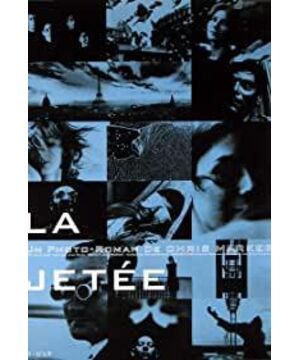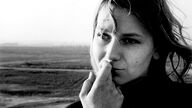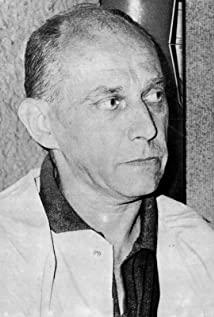In 2011, I was going to watch 200 high-quality films, most of which were famous films in the history of world cinema.
I don't want to invoke Kracauer's theory that cinema is inherently photographic, nor do I want to use Soviet montage theory, and I don't want to associate it with a piece of software called PPT.
Helipad/Dike is such a cinematic film that, unlike the almost neurotic madness of many experimental films, it creates a timeless beauty that transcends the experimental sense.
1. The basic unit of film is the lens.
Griffith creates from this starting point, making film an art with its own language. American film historians therefore call him the "father of film" (the mainland generally refers to The Lumiere Brothers, which were finally finished on a technical level).
"Dike" is also composed of shots. The difference is that most of the shots are a single still image, or a photographic work. Sometimes there are actually changes in the shots, that is, by pushing and pulling to show the details or the overall situation. There seems to be a shot in the traditional sense, the blink of the woman's eyes, the flow of this point in the frozen pictures is extremely special.
In fact, the film's narrative strategy of replacing one shot with one frame is extremely successful, because the "now" of the hero's life is an underground society with extremely poor material after the three world wars. Under the totalitarian rule, everything is rigid and rigid. Even those images into the past and future can only be fragmentary/photographic. To use an analogy similar to "Three-Body Problem 3", a person living in two-dimensional view sees three-dimensional, although moving is extremely beautiful and moving, mysterious and unpredictable, but it can only be solidified.
And the woman blinked because she really "lived" in the hero's heart.
2. The Jump Cut
It is often said that Godard's Exhausted (1960) ushered in a new era of cinema, largely due to its bold use of jump cuts.
And "Dike" (1962) is all about jump cuts, and its connection relies on sound. Bordwell talks about the "power of sound" in "The Art of Cinema," and "Dyke" is almost exemplary in that sound (and some of the spoken subtitles) influences our interpretation of the shot (here it is almost Interpreting most of the shots for us), connecting shots from different spaces (such as a tragic piece of music that ties together various dilapidated Parisian landmarks).
3. A complete rejection of the
"persistence of vision " theory The "persistence of vision" theory was once very popular, it believed that 24 frames per second playback can form a complete and continuous image because each picture will remain on our retina for a period of time . The big problem with this life-experience statement is that if it were, we would see a big stack, a ghost, rather than a complete flow of time.
The prevailing view now is "critical flicker fusion" and "kinetic phenomenon", or "psychological identification" - a selection mechanism of the brain.
Not only for each frame of the same shot, but also between the jump cuts, the human brain automatically fills in the gap between two completely different pictures, instead of overlapping the afterimage of one with the other.
However, in "Dike", a lot of pictures are superimposed together, which brings a sense of movement to this film, which is mostly static inside each shot.
4. The full film and the
mise-en- scene It seems that Bazin's theory is quite far from the film, not only does it not represent uninterrupted continuous time and space, but it also divides them into individual pictures. But I think it's a stylized treatment, it takes the most powerful parts of each shot and shows them for a long time, but it doesn't take a rational montage way to force them, but let the audience Choose your own observations.
Every shot/picture is extremely open and beautiful, with a huge space for imagination. It integrates photography, Bazin's so-called art of spice up time to avoid its own decay, into the film and become fluid and changeable. The brokenness of those sculptures became real and painful and "lived".
As an indomitable art of time, the film turns the still picture into a real scene, and the gap between the pictures is filled by natural imagination, and thus complete.
5. About the story
The film of less than 30 minutes shows the serene elegance and beauty of the past/past, the mysterious inaccessibility of the future, the alienation and sadness of the present, and tells the tragic fate of human beings and the irredeemable fate of a person. It's comparable to Jean Renoir's The Great Phantom/Disillusionment.
The later expansion work "Twelve Monkeys" is also a first-class work, but it cannot reach the height of this film.
Last year I saw Jacques Tati's "Mr. Hulot's Holiday", "My Uncle", "Playtime" and thought that the shock of French films to me would stop there. But . . .
some films may indeed have surpassed some literature as art.
Nonsense, please tap.
View more about La Jetée reviews








